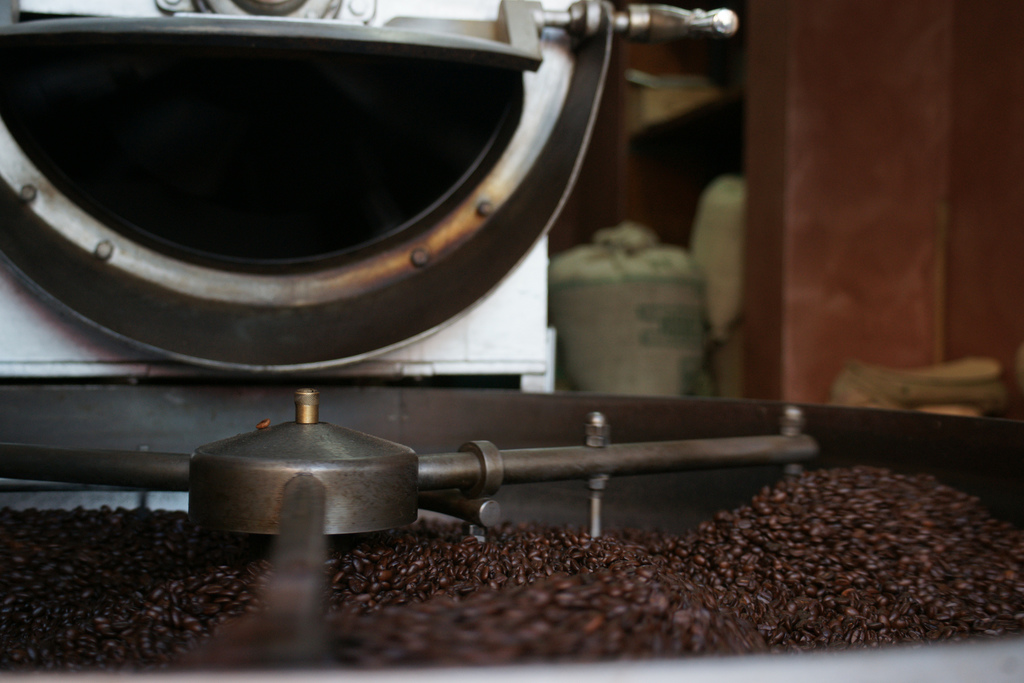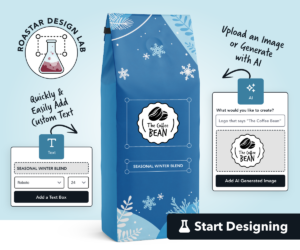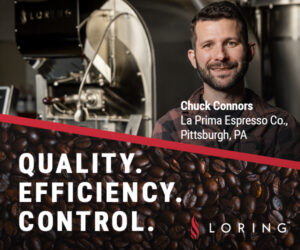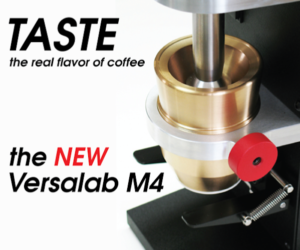Coffee production and roasting in particular have long flown under the radar when it comes to food safety regulation at manufacturing facilities. It has been an area left in the shade by the people creating the radar — the government agencies that regulate and inspect such facilities — and therefore also by the roasters whose operations would be on it. That shade is gone now, however, as a regulatory spotlight is shining more brightly than ever onto coffee roasting facilities.
On Jan. 4, 2011, President Obama signed into law the Food Safety Modernization Act (FSMA). The law is designed to ensure that the food supply in the United States is safe by shifting the focus from responding to problems that have already occurred to preventing such problems in the first place.
The FSMA is the first major piece of federal legislation to address food safety since 1938. Here are some facts that drove the legislation:
- About 48 million Americans become sick every year from food-related illnesses.
- Of these, 128,000 require hospitalization to treat food-related illnesses, and 3,000 die.
- Infants, children and older individuals are more susceptible to foodborne illnesses.
- With increasing globalization, 12 percent of the food we consume is imported from other countries.
- There could be a risk of terrorism-related food tampering.
- The importance of preventing contamination and health risks throughout our food chain is a key risk-management strategy.
What this means for the roasting company is that you must treat coffee as the food product that it is. The FDA considers a food product to be anything that you put into your mouth and swallow. All food products have potential to cause harm, no matter how low the risk.
The Coffee Roasting Company’s To-Do List
Begin by registering your company. Simply visit the FDA Food Facility Registration page and follow the links to register. Food facility registration helps the FDA determine the location and source of a potential bioterrorism incident or an outbreak of foodborne illness, and allows the agency to notify entities and consumers who may be affected in a timely manner.
Good Manufacturing Practices in Place (GMPs)
Title 21 of the federal Code of Regulations covers Good Manufacturing Practices (GMPs) for food. The section of the code was developed as a guideline to ensure and promote sanitary practices, sanitary design and sanitary facilities within a process system. It consists of:
- 110.10 Personal Hygiene
- 110.20 Plant and Grounds
- 110.35 Sanitary Operations
- 110.37 Sanitary Facilities and Controls
- 110.40 Equipment and Utensils
- 110.80 Process Controls
- 110.93 Warehouse and Distribution
Consider these the foundation of a food-safe environment. Without standard operating procedures in place to cover these areas, you cannot continue with a written food safety plan. That plan is a FSMA requirement that should encompass each of the main elements described below.
Hazard Analysis and Critical Control Points (HACCP)
This is a systematic, preventive approach to food safety from biological, chemical and physical hazards in production processes that can cause the finished product to be unsafe. Bottom line: HACCP details the prevention of hazards rather than finished product inspection. It will follow your product — in this case coffee — through the roasting plant, from receiving all the way through to shipping to your customer. It focuses on the hazards that are unique to your product. The concerns for a seafood processor will be different from those of a coffee roasting company.
Recalls
The main question to address here is, can you get ALL your product back if there is a problem? Your written food safety plan must include a procedure detailing what you will do in the event of a recall. However, this is only part of what they are looking for; you must have procedures in place that show you “listen” for potential problems. This means reviewing customer service phone logs, paying attention to coffee industry hazards, maintaining an open door policy for all employees to report potential problems, etc.
The problem for roasters is how to set up a recall procedure. For starters, you should create a protocol for tracking product complaints from customers, as well as identifying what potential trends these complaints might show. The FDA’s focus, however, is not on quality issues, but on potential health issues. For a more complete understanding of this, let’s start with how the FDA classifies recalls, based on severity:
- Class 1: Likely to cause severe illness or death
- Class 2: Likely to cause illness
- Class 3: Likely to cause “unpleasantness” but not much more
While there have been no major recalls, the coffee industry has seem some evidence of them here and there, most notably a case in the 1990s involving recalls of flavored coffee that contained potential nut allergens. However, there have been numerous examples of massive recalls coming from seemingly out of nowhere in other industries, and cold brew presents a particularly new challenge in coffee.
A qualified plan writer
For most larger coffee companies, your plan must be written by a qualified individual, though what constitutes “a qualified individual” is not well-defined by the law. Technically, a qualified individual has successfully completed training in the development and application of risk-based preventive controls, or is otherwise qualified through job experience to develop and apply a food safety system. This person becomes the official record keeper, assuring that all plan-related documentation is properly completed, maintained, and available for review.
Owner and management participation
One of the most important aspects of a written food safety plan is the role of owners and top executives. They can’t simply put someone else in charge of it. They must be active in the plan development and implementation, and have full understanding of the laws and their roles, and be able to assure the company is in compliance.
It’s also important to understand that this is not something you can do once, clap the dust off your hands and move on. The plan must be reviewed and updated every three years, as well as any time you discover that a control or procedure is not effective. Inspectors will want to see that your plan is a living, breathing document, regularly discussed and reviewed by the entire company.
The bottom line and the benefits
No matter the size of your company, you should take this seriously. Coffee roasting is inherently a low-risk product — we roast and brew at high temperatures, eventually run it through a filter, etc. For me, the reason to actively comply with the FSMA is simple: It makes your business better.
My advice for the roaster starting from scratch is to educate your yourself and your team on all facets of food safety, beginning with GMPs, HACCP, recalls, supply verification and internal audits. Start with a focus on GMPs. These are the foundation upon which a food safety program is built. Learn how to document these, and how to ensure they are being followed. Once you feel your GMPs are in place and working, educate your team a bit more, with a focus on writing your first HACCP plan.
Most of us want a clean plant and sanitary operations, yet we often focus either on things that are not important, or we try to do too much all at once. Yes, the creation of a well-written food safety program takes time and a ton of documentation, and it’s a process that is never complete, but having a baseline education in food safety and a good program in place allows you to focus on the areas that are important. In addition, if and when you are inspected, you are ahead of the game, and know what to expect.
Perhaps the biggest, most practical benefit is the knowledge that your company is compliant. When that big potential customer comes a-calling, and they ask you about your written food safety plan, you can confidently say you’re ready to go.
Mike Ebert
Mike Ebert is the founder of Firedancer Coffee Consultants, dedicated to helping clients create a personalized strategy to ensure long-term success. Ebert is a specialized lead instructor for the Specialty Coffee Association (SCA); a certified Preventive Controls Qualified Individual (PCQI) and lead trainer for food safety; and co-chairs curriculum for the SCA Educational Advisory Council.
Comment
5 Comments
Comments are closed.















Does this count if you’re roasting out of your garage and have no employees??
Probably. Seems that’s precisely the sort of operation they’d LOVE to shut down, You know the little guy making it meme.
I suppose this is something that we’ll all have to get used to, unless it somehow gets repealed or stricken. Not constitutioinal at all, but what is, these days? Not much. Friend of mine runs an organic farm and a subscription based food distribution network, This new law nearly shut him down, as the costs of records and compliance are so insanely high to comply. For a larger company, such as Whole Foods, New Seasons, Charlie’s Produce, its just one more thing for existing staff to bother themselves over. The small guy is trying to make ends meet, deal with surprises, manage his COGS….. and must take his time from all that critical stuff and turn it to what does not make money OR improve the business. Sad….
BUT, this article is a good one, it breaks it down into the component parts like none other I’ve seen yet.
Great article! I have recently taken a position QA/Safety Coordinator at a coffee roasting manufacturer in Texas. The person doing the job before me never cared about keeping records up to date and documenting HACCP and GMP policies. Basically I am starting from scratch here and would like some advice on prioritizing my record keeping.
I have a background in food manufacturing and also Servsafe Managers qualification.
I have put HACCP in place in my first two months and I’m working on FDA regulations and GMP policies. Also dealing with becoming OSHA compliant at the same time.
any suggestions would be great!
I live next to a new coffee house in nc . They are zoned for a restaurant.. mixed zoning.. the owner has begun roasting for 3 hours at a time . They have piped a smoke stack to the back of the building this goes into the air and is nauseating to the community. We can’t breath… we live in nc . The smell is awful. Can something be done to help us? The massive smoke fill our yard and into our homes…what agency can we call for help
Your roaster friend has to comply with the applicable state and local codes concerning smoke pollutants. Your city should have an environment department that you can call to complain about a neighbor burning stuff, like trash or coffee. Call, have your neighbors call. If the roaster is in compliance, I’d get a hold of my district rep and bend their ear about it. Coffee roasting machines can be fitted with afterburners that incinerate the smoke, leaving a clear almost odorless exhaust. Either this roasting machine doesn’t have one and should or the AB unit isn’t functional or not functioning correctly. Point is, the smoke problem can be corrected by the owner and should be. The last thing a coffee roaster wants is bad publicity.